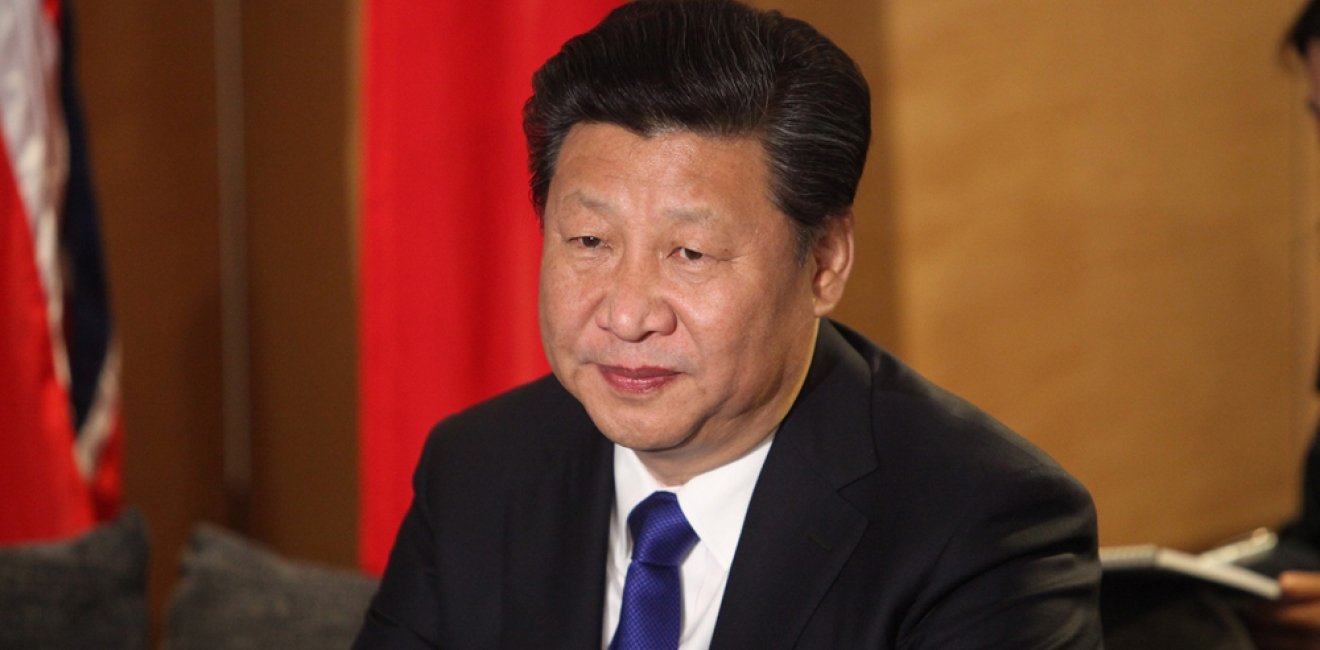
A blog of the Indo-Pacific Program
China’s explosive economic growth has been the single most profound and significant geopolitical event of the last four decades. Once a financial and technological backwater, China today is a leading driver of economic growth in East Asia and increasingly of technological innovation around the world. As a result, the United States and the rest of the Asia-Pacific have developed robust economic relationships with mainland China. As a result, the entire world is increasingly invested in China’s success.
Yet the rise of Chinese power has also raised the specter of an increasingly assertive, proactive, and ambitious Chinese foreign policy that seeks to use its newfound geopolitical influence to shape its external environment in ways not seen since before the founding of the People’s Republic of China. Chinese President Xi Jinping, fresh off a very successful 19th Party Congress that saw him elevated to the highest levels of Chinese Communist Party leadership, has charted a more aggressive and risk-acceptant approach to foreign policy in the pursuit of the so-called “great rejuvenation of the Chinese nation.” In short, a newly powerful China, led by a newly powerful Xi Jinping, is likely to be far more active and assertive in areas of fundamental interest to the United States.
For his part, President Trump has also signaled a greater willingness for friction with China across all elements of national power. Acting to address perceived economic grievances and to push back against Chinese ambitions in areas of significant American interest, the Trump administration has signaled a greater willingness to accept explicit friction and competition with China across all elements of national power.
This sets the stage for intensified competition between Beijing and Washington across several issues of critical importance to the United States and its allies in 2018 and beyond.
China’s “New Era”
The recently concluded 19th Party Congress inserted a new phrase into the Chinese constitution: “Xi Jinping Thought for the New Era of Socialism with Chinese Special Characteristics.” In this new era is likely to define its interests expansively, and to assert those interests abroad with a greater degree of confidence and ambition than we have seen before.
Xi Jinping has identified his primary objective to be achieving the “great rejuvenation of the Chinese nation” by mid-century. Xi Jinping has defined this as realization of the Chinese dream of restoring China’s wealth and power after a so-called “century of humiliation” at the hands of militarily stronger foreign countries, in the course of which China was forced to cede vast swathes of its territory and surrender sovereignty to exploitive and rapacious foreign powers.
Under Xi’s leadership, China has been far more actively engaged in shaping regional and global affairs than ever before. While some dissatisfaction with the international system is nothing new, Xi has demonstrated a much greater willingness to attempt to alter the regional architecture in Asia and globally in ways that emphasizes Chinese centrality and addresses Chinese power and interests. This has taken a variety of forms, but generally China has demonstrated a greater willingness to accept risk and tension in the pursuit of its interests and preferences. China has also demonstrated a greater inclination to seize strategic opportunities to advance Chinese interests and champion China’s role as a leading great power.
This is important for understanding Chinese foreign policy for two reasons.
First, Xi’s ambitions will likely focus even greater attention on making China whole again, according to Beijing's conception of China's rightful national boundaries. In his Work Report to the 19th Party Congress, Xi Jinping stated that achieving China's full reunification is essential to realizing national rejuvenation. This will potentially increase pressure on Chinese officials to make progress toward resolving China’s lingering disputes in the East and South China Seas and along its border with India. Most significantly, however, Xi’s ambitions for national rejuvenation could have profound implications for Taiwan. Two upcoming centenary celebrations—the 100th anniversary of the founding of the Chinese Communist Party in 2021 and the 100th anniversary in 2049 of the founding of the People’s Republic of China—will likely focus Beijing’s attention on making progress toward its definition of national rejuvenation.
As a consequence, Beijing is likely to be increasingly sensitive to issues related to its definition of Chinese sovereignty and territorial integrity. A more ambitious and assertive China that is increasingly sensitive to disputes along its periphery raises the potential for friction and tension between China, its neighbors, and the United States.
Second, Xi is likely to expect that China will receive greater degrees of influence and deference in the international arena. Xi Jinping seeks to gradually place China at the top of regional geopolitics and, eventually, as the leading global power. This “Neo-Tributary” approach to regional affairs—in which the economic and political destiny of every Asian country runs through China and Beijing’s interests and preferences are the key factors in any decision of geopolitical consequence in the Asia-Pacific—will directly challenge the interests and prerogatives of China’s neighbors and the leadership role that the United States has traditionally played in the region.
I expect that China will continue to look for ways to highlight its growing power, to further establish itself at the center of the regional political and economic architecture, and to advance its interests even if it generates greater friction with its neighbors and the United States. Xi is likely to continue presenting China to the international community as the champion of globalization and open markets, even while he eschews such policies domestically. He is also likely to continue to promote initiatives such as One Belt One Road and AIIB to drive Asia’s future economic development, especially if the United States continues to struggle to find a successor to the Trans Pacific Partnership for its regional economic vision.
Implications for the United States
A newly powerful, proactive, and ambitious China will have profound implications for the United States, its allies, and its interests. In many ways, some of the fundamental assumptions of the U.S.-China relationship are being reconsidered.
While the decision by the United States began to engage China in the 1970s was primarily made out of a realpolitik decision that closer ties between Washington and Beijing would undermine Moscow’s relative position. How China may orient itself to the rest of the world was not given much thought at that time, but American leaders generally assumed that as China integrated more with the outside world, it would increasingly define its interests along with those of the international community.
For decades, China’s geopolitical weakness meant that any question of whether or not China’s views aligned with those of the liberal international order were largely academic. However, starting in the 1990s as China’s rise became more noticeable and of great consequence, American leaders began to call for China to act in greater accordance with the liberal international order. Most famously, in 2005, Deputy Secretary of State Robert Zoellick called on China to act as a “responsible stakeholder” that contributes to addressing international issues in accordance with the liberal order we had established after World War II. Yet, as described above, China’s actions have made it increasingly clear that Beijing’s views on international issues has grown increasingly ambivalent.
The 2017 U.S. National Security Strategy represents a significant, if imperfect, shift from this approach. It identifies China as a revisionist power and explicitly describes the U.S.-China relationship as fundamentally competitive. It further pledges that the United States will push back against Chinese efforts to spread its power and influence across the Asia-Pacific, and commits the United States to competing with China across all elements of national power.
Prepare for Competition
2018 is likely to see the outbreak of explicit competition between China and the United States across multiple fronts.
Competition is likely to be seen most immediately in the bilateral trade and investment relationship. The Trump administration has already signaled its displeasure with Chinese economic and trade practices, saying in its National Security Strategy that the United States “will insist upon fair and reciprocal economic relationships to address trade imbalances.” It also called out China for “steal[ing] U.S. intellectual property valued at hundreds of billions of dollars.” The United States has already launched a case against China for aluminum dumping, which many expect is a warning shot to Beijing that they should improve their practices or face additional economic pressure. The Trump administration has many additional options at its disposal, including efforts to block Chinese investments in the United States (potentially on the principle of reciprocal access), pursuing Section 301 cases alleging unfair practices, or even slapping all Chinese imports with the 45 percent tariffs promised during the 2016 presidential campaign. China would almost certainly retaliate in kind, raising the potential for a trade war between the world’s two largest economies. The only deterrent against an outright trade war is that it would cause significant economic damage to both sides, and both Xi and Trump need to sustain economic growth to achieve their domestic agendas.
One can also expect further competition between the United States and China on defining the future architecture of the region. While the United States has been slow to come up with a replacement for TPP, Japan’s leadership on pushing forward with TPP-11 and the “Quad” will likely keep the United States engaged, to a degree. China will certainly seek to take advantage of the still-inchoate Asia strategy from the United States and continue to promote its alternative architecture framework with AIIB, NDB, RCEP, and the BRI. China may open further foreign military bases such as the facility recently opened in Djibouti, and will likely seek to build stronger military cooperation relationships in South and Southeast Asia and East Africa to expand its regional footprint and circumscribe the regional role of the United States.
Other regional security issues – North Korea, Taiwan, the East China Sea, the South China Sea, and India – as opportunities to assert Chinese interests. While much has been written about many of these issues (for good reason), one issue that has not received significant attention in recent months is the South China Sea. This is likely an oversight, as China has not abandoned its ambitions for the South China Sea. Indeed, Xi highlighted island building and military construction in the South China Sea as a personal triumph.
It is possible that China may declare an Air-Defense Identification Zone (ADIZ) in the South China Sea – similar to its 2010 declaration of an ADIZ in the East China Sea – as part of its strategy to claim most of the South China Sea as its own. Equally possible is that China may declare “straight baselines” around the Spratly Islands in the southern portion of the South China Sea; doing so would not be consistent with the UN Convention on the Law of the Sea, and would amount to a claim of sovereignty over most of the South China Sea.
This is not to say that cooperation between China and the United States is impossible. Indeed, I expect both Beijing and Washington will look to cooperation as a means to manage competition. Yet such cooperation will not be focused on building trust or some other altruistic end; rather, they will be done because it is in the national interest of both sides to cooperate. This means that, on areas of mutual interest such as humanitarian assistance and disaster relief, cooperation remains likely.
Competition between China and the United States is also likely to become more ideological than ever before. The 2017 National Security Strategy was replete with negative references to China’s political system, and China has already begun to trumpet its system as a potential model for other developing countries that seek economic growth but want to eschew political liberalization. Indeed, Xi’s exhortation at the 19th Party Congress that China’s system is “blazing a new trail for other developing countries to achieve modernization” and offers “a new option for other countries and nations who want to speed up their development” suggests that China sees in itself a credible alternative to liberal democracy.
Ultimately, tension between the United States and China is likely to intensify because China is rising, and is doing so in a way that makes the United States and the rest of the Asia-Pacific very nervous. Xinhua’s summary of the 19th Party Congress summarizes the tension in this dynamic: “China is now strong enough, willing, and able to contribute more for mankind. The new world order cannot be just dominated by capitalism and the West, and the time will come for a change.” The next several years will determine whether Kissinger was correct in 1971 when he visited China and began the process of bringing China into the world and enabling its rise, or if Kissinger was correct in 1994 when he wrote: in his masterpiece Diplomacy: “The domination by a single power of either of Eurasia’s two principal spheres—Europe or Asia—remains a good definition of strategic danger for America, cold war or no cold war.”
The views expressed are the author's alone, and do not represent the views of the U.S. Government or the Wilson Center. Copyright 2018, Asia Program. All rights reserved.
Author


Indo-Pacific Program
The Indo-Pacific Program promotes policy debate and intellectual discussions on US interests in the Asia-Pacific as well as political, economic, security, and social issues relating to the world’s most populous and economically dynamic region. Read more


Kissinger Institute on China and the United States
The Kissinger Institute works to ensure that China policy serves American long-term interests and is founded in understanding of historical and cultural factors in bilateral relations and in accurate assessment of the aspirations of China’s government and people. Read more





